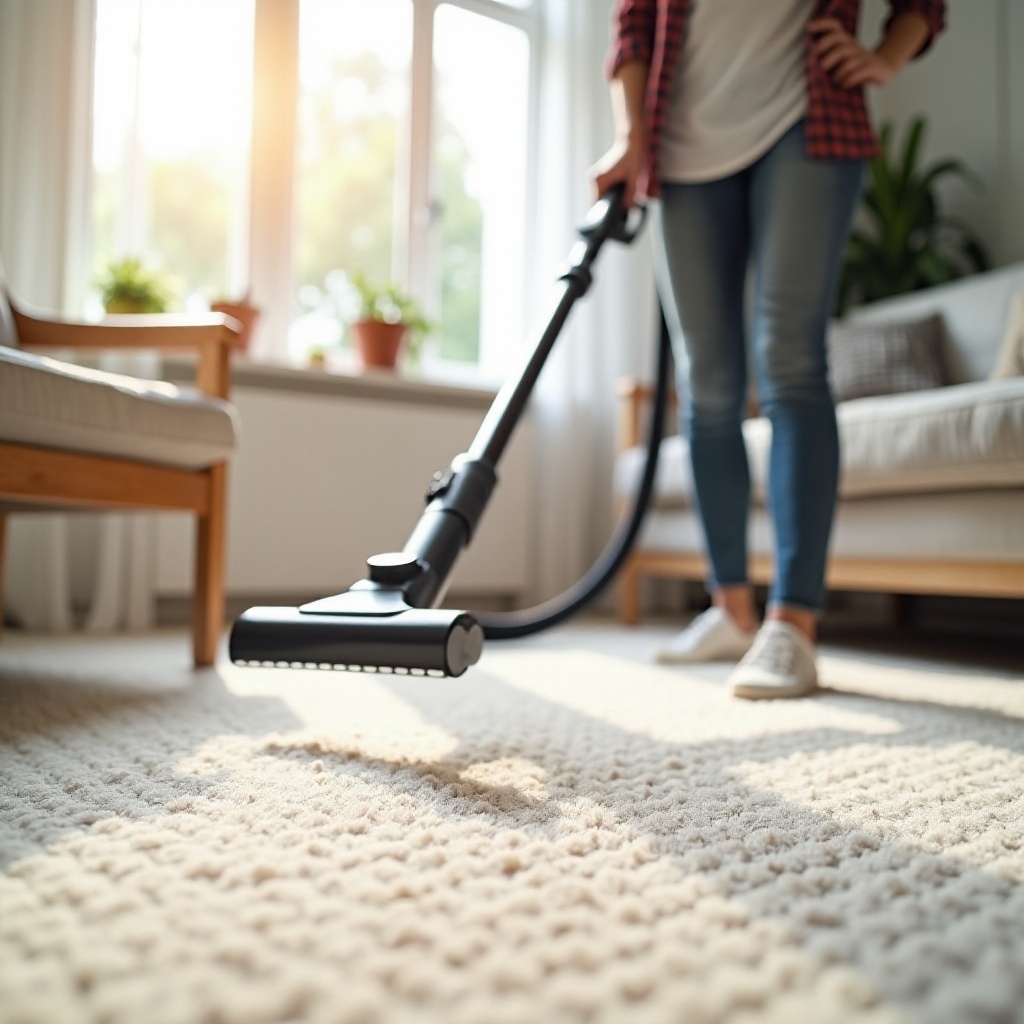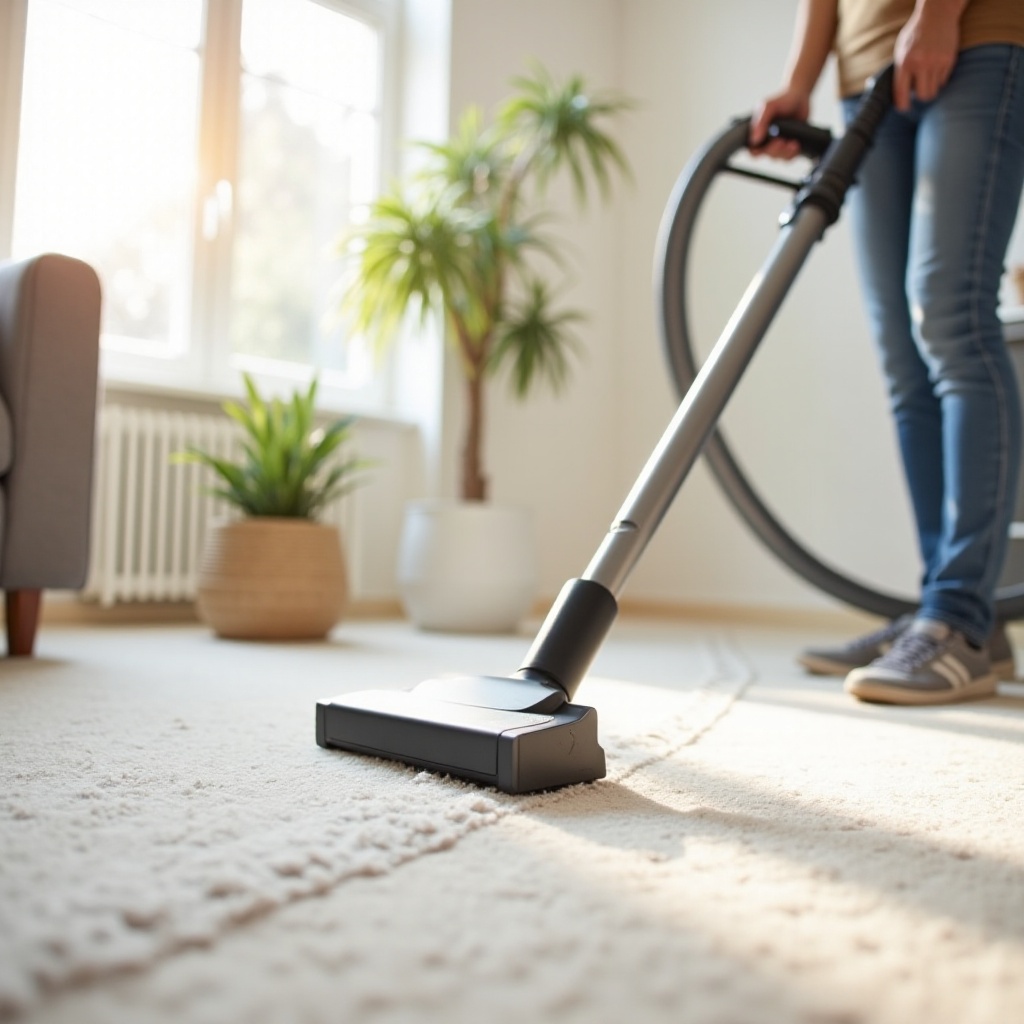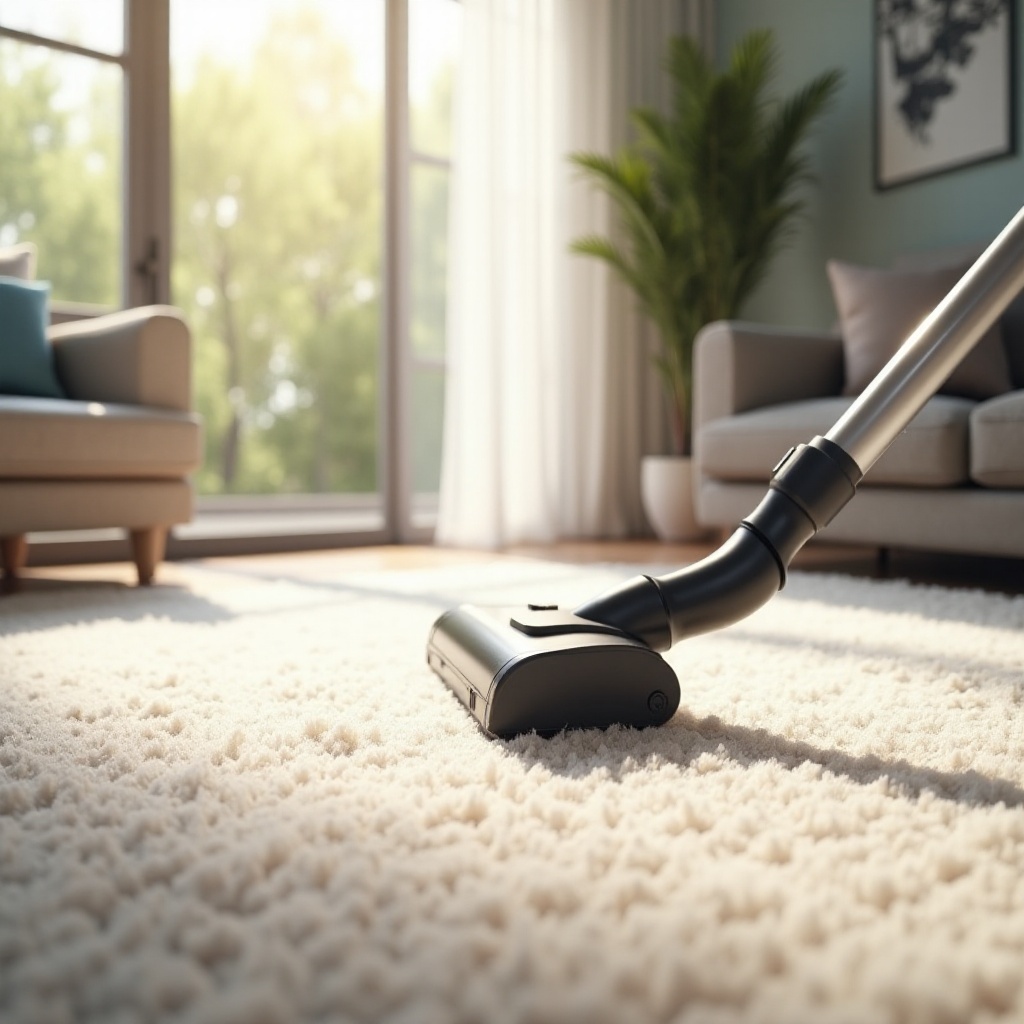Introduction
Vacuuming carpets is a routine chore essential for maintaining a clean and healthy home. However, many people do not realize there is a right and wrong way to vacuum. Proper vacuuming can extend the life of your carpet, improve indoor air quality, and ensure your home looks tidy and inviting. This blog will provide a comprehensive guide on how to vacuum carpets properly, covering different types of carpets, selecting the right vacuum, preparing your carpet, and offering essential maintenance tips.

Types of Carpets and Their Vacuuming Needs
Carpets come in various materials, each with unique vacuuming needs. Understanding these differences is crucial for effective cleaning and carpet care.
-
Cut Pile Carpets: These are the most common types of carpets and include plush, Saxony, frieze, and cable varieties. They require regular vacuuming with a vacuum cleaner featuring a rotating brush to lift the pile and remove dirt.
-
Loop Pile Carpets: Known for their durability, loop pile carpets include Berber and level loop styles. They are best vacuumed with a suction-only vacuum to prevent damage to the loops.
-
Cut and Loop Pile Carpets: These combine both cut and loop fibers to create patterns. They need regular vacuuming with a multi-floor vacuum cleaner set to the appropriate carpet height.
-
Shag Carpets: These have long, thick fibers that can easily trap dirt and dust. Use a vacuum cleaner with adjustable height settings and powerful suction to penetrate deep into the fibers.
Different carpet types require specific care. Choosing the right vacuum cleaner can make a significant difference in maintaining your carpet.
Choosing the Right Vacuum Cleaner for Your Carpet
Selecting the right vacuum cleaner is pivotal in ensuring your carpets remain in excellent condition. Here are the factors to consider:
-
Carpet Type: As discussed earlier, different carpets need different vacuums. Ensure your vacuum cleaner is suitable for your specific carpet type.
-
Power and Suction: A vacuum with strong suction power will help lift embedded dirt and debris. Look for models with adjustable suction settings for better control.
-
Brush Roll: A vacuum with a brush roll (beater bar) is effective for cut pile carpets, while suction-only models are better for loop pile types to prevent snagging.
-
Filters: HEPA filters are beneficial as they trap dust, pollutants, and allergens, which is especially important for households with allergy sufferers.
-
Attachments: Consider vacuums with various attachments, such as crevice tools and upholstery brushes, to clean hard-to-reach areas and furniture.
With the right vacuum cleaner, you can tackle the specific needs of your carpet more effectively. Once equipped, preparing your carpet for vacuuming is the next crucial step.
Preparing Your Carpet for Vacuuming
Before you begin vacuuming, it’s essential to prepare your carpet to ensure a thorough clean.
-
Declutter the Area: Remove small items like toys, shoes, and other objects that could obstruct or damage the vacuum cleaner.
-
Dust the Furniture: Dust settles on the carpet, so it’s a good idea to dust your furniture before vacuuming to avoid recontaminating the area.
-
Check for Large Debris: Pick up larger debris like paper, coins, and small fragments that could clog the vacuum.
-
Treat Stains: If there are visible stains or spills on the carpet, treat them with a suitable carpet cleaner and allow it to dry before vacuuming.
-
Adjust the Vacuum: Make sure your vacuum cleaner height is adjusted according to the carpet type for optimal performance.
Having prepared your carpet, you are ready to follow a step-by-step guide to vacuuming it properly.
Step-by-Step Guide to Vacuuming Carpets
A systematic approach will ensure your carpet is cleaned effectively. Follow this step-by-step guide:
-
Start with the Edges: Use the vacuum cleaner’s crevice tool to clean along the edges of the room and baseboards where dirt accumulates.
-
Vacuum in Sections: Divide the carpet into manageable sections and vacuum each area thoroughly. Moving in straight lines ensures that every inch is covered.
-
Go Over High-Traffic Areas: High-traffic areas need extra attention. Go over these sections multiple times and from different angles to ensure deep cleaning.
-
Vacuum Slowly: Move the vacuum cleaner slowly to allow the suction to lift dirt and dust effectively. Rapid movements can miss dirt trapped deeper in the carpet.
-
Overlap Strokes: Overlap each pass slightly to ensure no part of the carpet is missed. This technique also helps remove embedded dirt more effectively.
-
Focus on Heavy Furniture Areas: Carpets under heavy furniture accumulate dust and need specific attention. Use attachments to reach underneath and around furniture pieces.
Vacuuming carpets regularly and effectively keeps them looking clean. But there’s more to carpet care than just vacuuming.

Maintenance and Aftercare Tips
Regular maintenance ensures your carpet remains clean and prolongs its lifespan. Here are some aftercare tips:
-
Regular Vacuuming: Aim to vacuum at least once a week, increasing the frequency in high-traffic areas.
-
Spot Cleaning: Address spills and stains immediately to prevent them from setting in. Use an appropriate carpet cleaner and follow the manufacturer’s instructions.
-
Professional Cleaning: Schedule professional carpet cleaning once or twice a year to remove deep-set dirt and refresh the carpet fibers.
-
Rotation of Furniture: Rearrange furniture periodically to prevent uneven wear on the carpet.
Consistent maintenance and professional cleaning add an extra layer of care, keeping your carpets in their best condition.

Conclusion
Proper vacuuming is more than just a weekly chore; it is an integral part of maintaining the cleanliness and longevity of your carpet. By understanding the needs of your specific carpet type, choosing the right vacuum, preparing the area, and following a systematic vacuuming approach, you can ensure your carpets remain in top condition. Regular maintenance and professional cleaning add an extra layer of care, keeping your home healthy and your carpets looking their best.
Frequently Asked Questions
How often should I vacuum my carpets?
It is recommended to vacuum at least once a week. In high-traffic areas like hallways and living rooms, you may need to vacuum more frequently, possibly even daily, to maintain cleanliness.
Can vacuuming damage my carpet?
Vacuuming, when done correctly, should not damage your carpet. However, using the wrong vacuum settings or type can cause harm. For example, using a brush roll on loop pile carpets can cause snagging and damage. Ensure your vacuum is suitable for your carpet type and adjust settings as needed.
What is the best way to clean high-traffic areas?
High-traffic areas require more frequent and thorough vacuuming. Use a vacuum with strong suction power and go over these areas multiple times from different angles. Additionally, consider deep-cleaning these sections with a carpet cleaner periodically to remove dirt embedded deep within the fibers.


